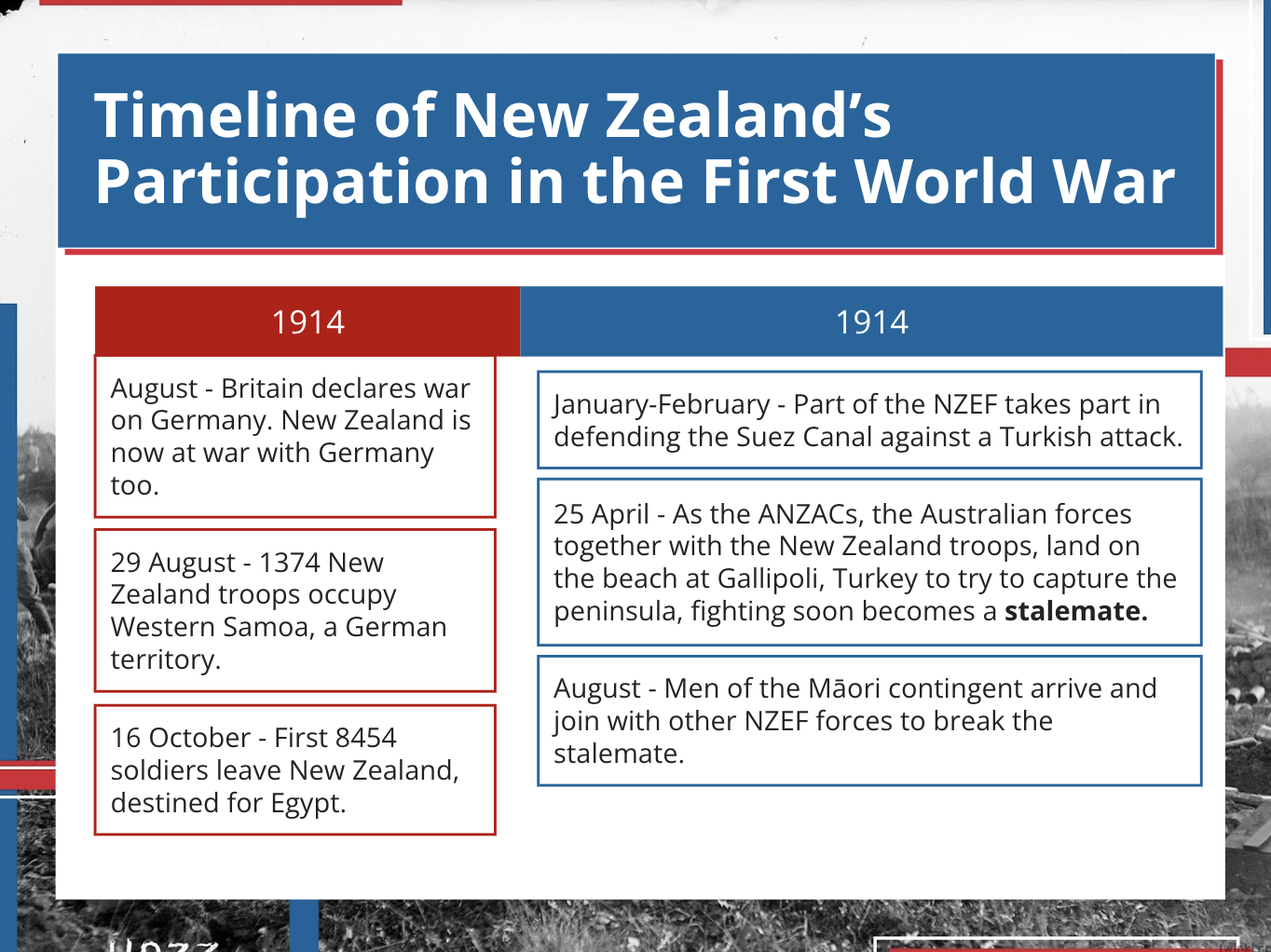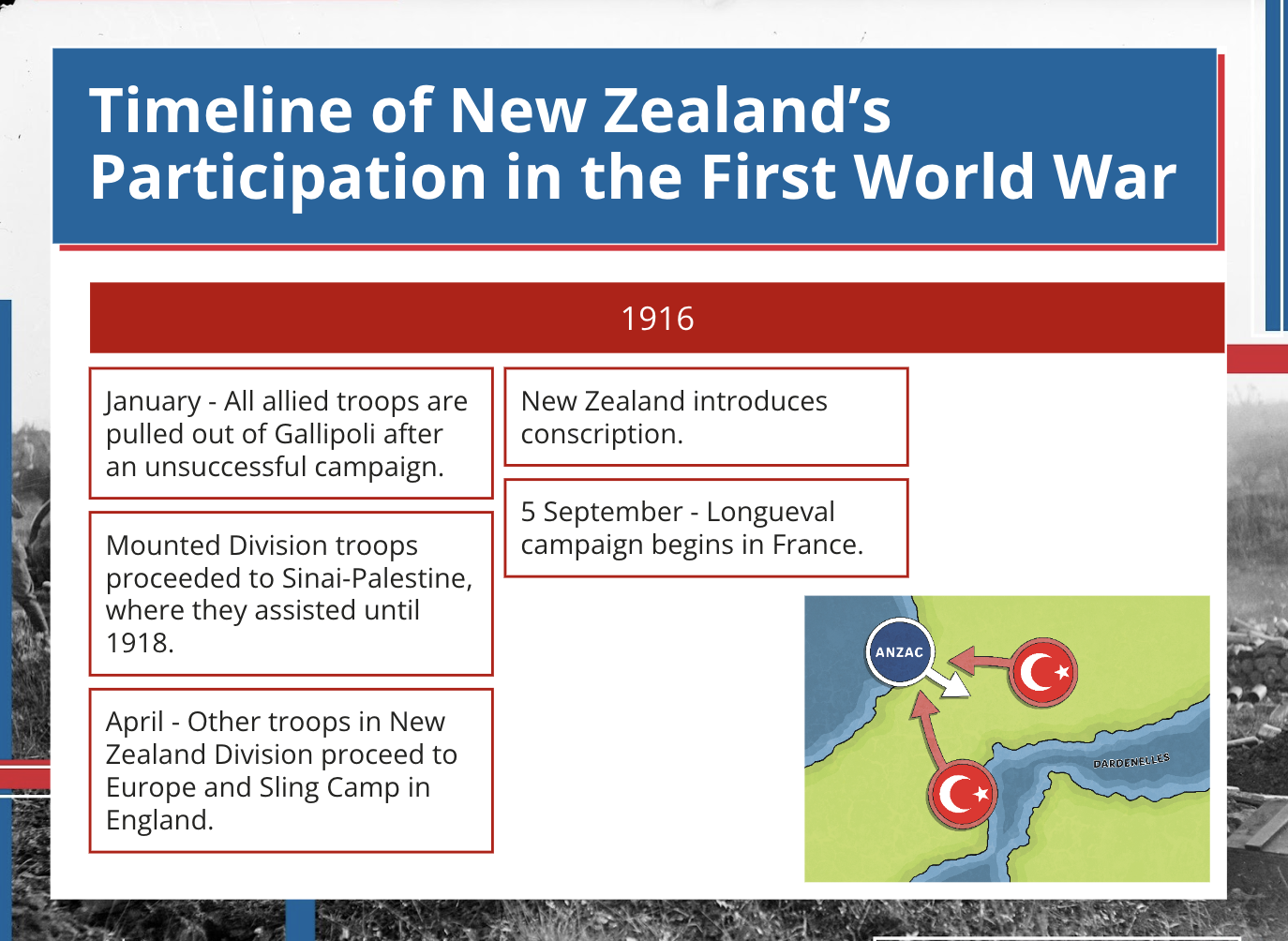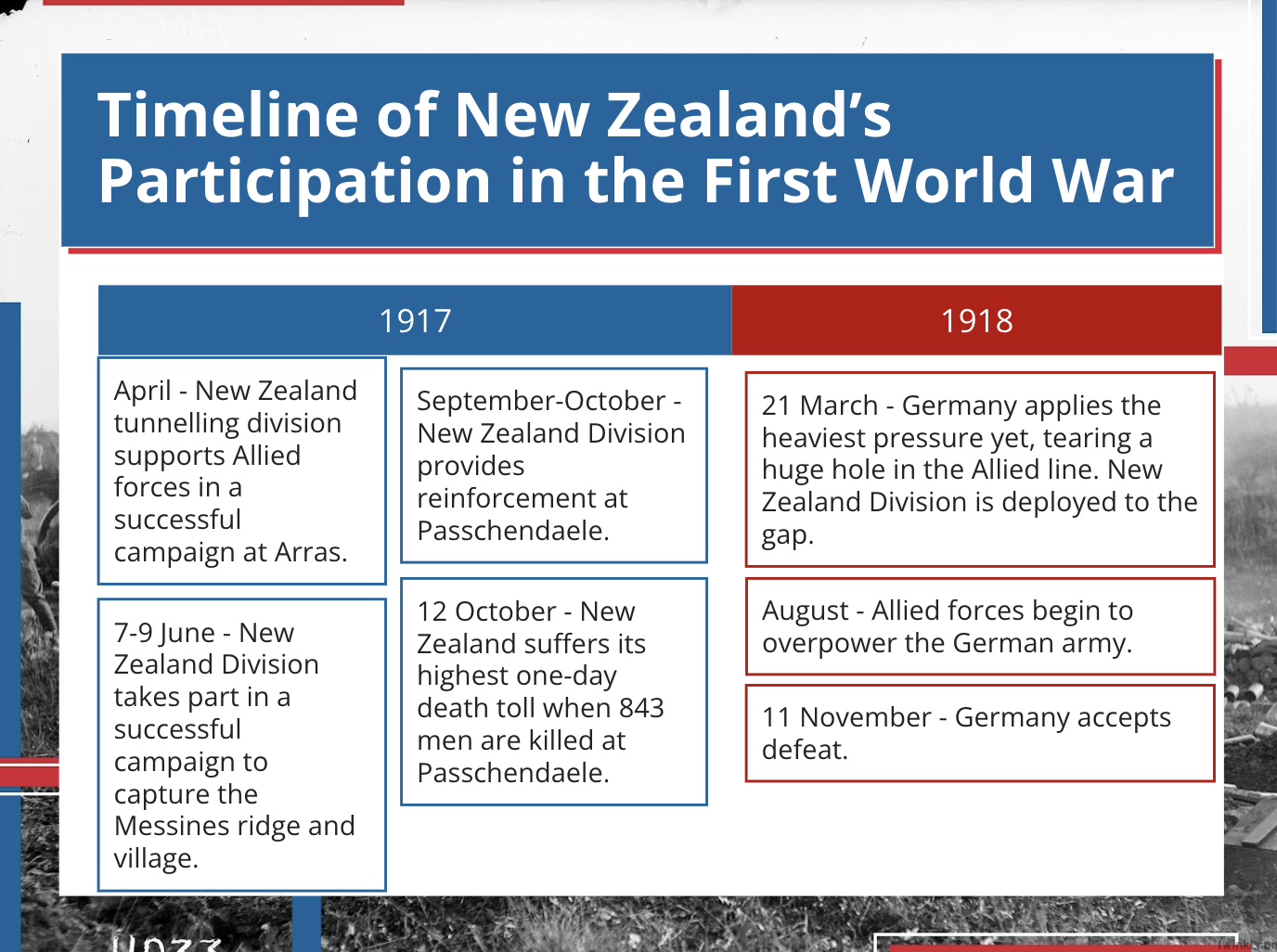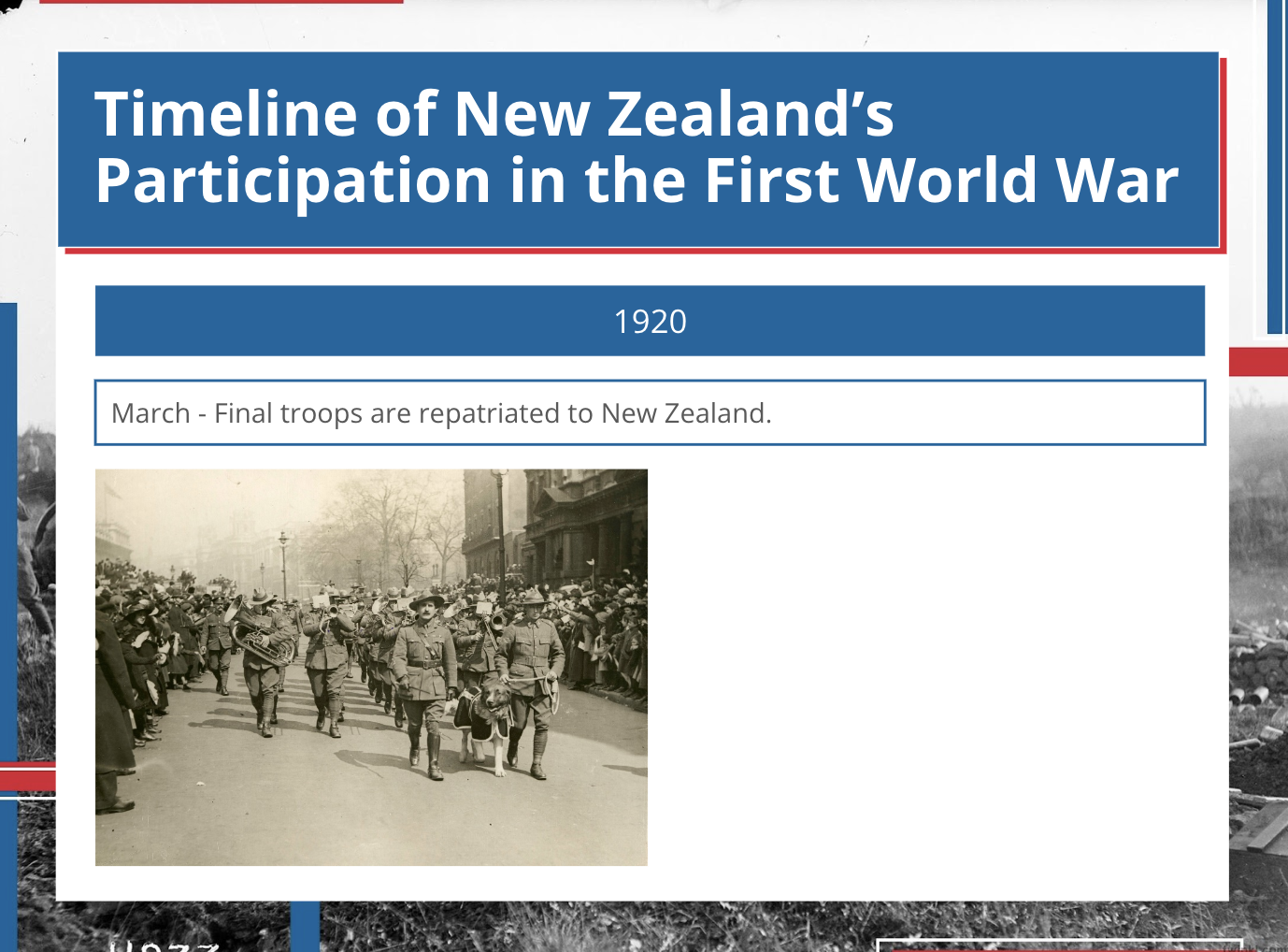1 May - 7 May
Section outline
-
EXPLORE / TŪHURA learning intentions:
- We are EXPLORING to explain concepts that are contested and mean different things to different groups.
- We are EXPLORING Aotearoa New Zealand’s participation in international conflicts over time, how we remember them and how we honour all those involved.
Complete your title page in your book.
MUST include 'New Zealand in the First World War', images, colour.
MUST NOT be a pencil sketch, scrappy drawings, rushed.
Define:- Maori Contingent
- Reinforcement
- Conscription
- Conscientious Objector
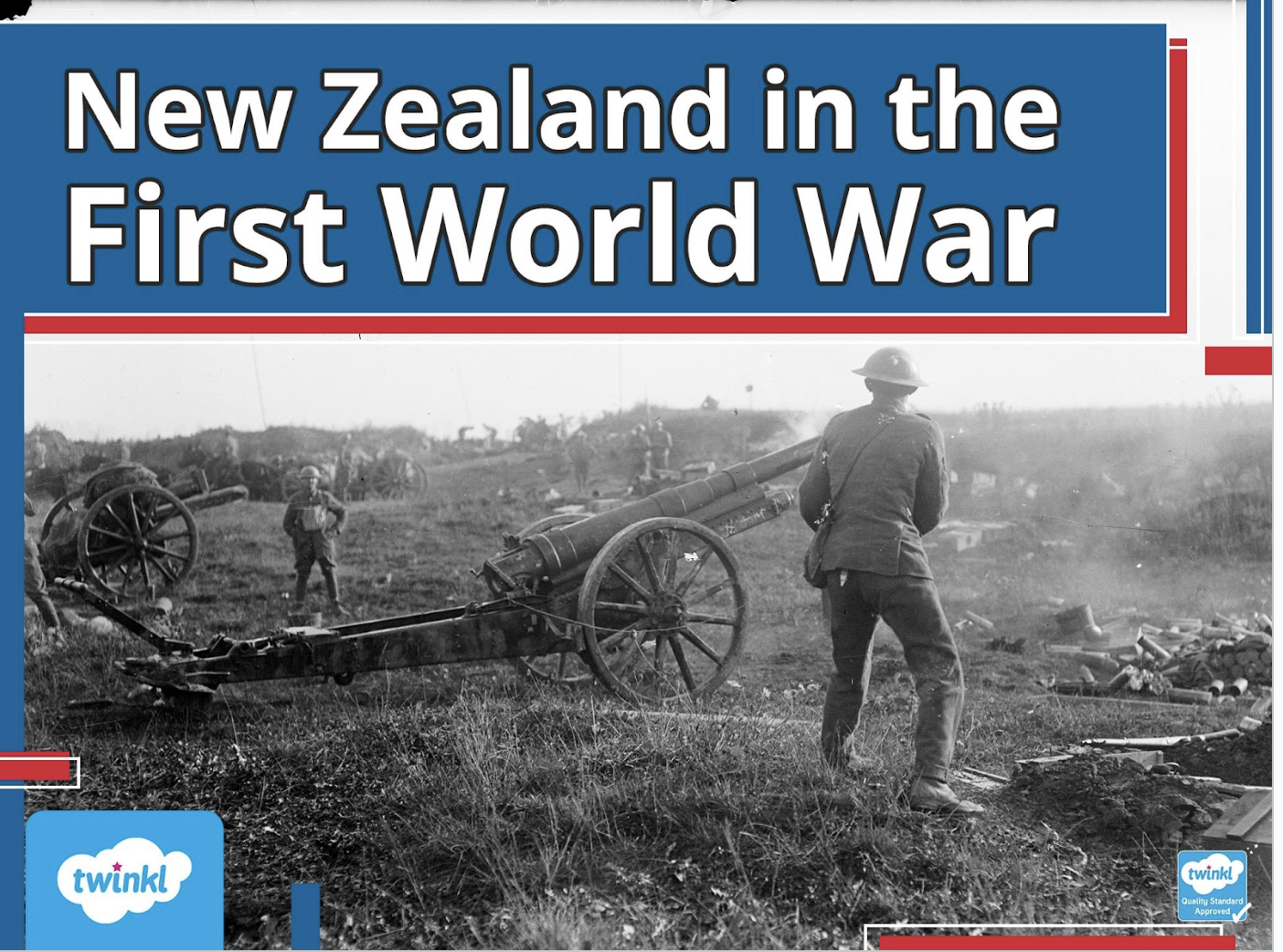
The Beginning of the First World War
In the early 1900s, Germany was becoming a wealthier, more powerful country and this was causing an adjustment to the power balance in wider Europe. The policy of imperialism meant many larger European countries were beginning to take over other smaller, weaker ones.
Many countries had created alliances with one another, such as Germany with Austria/Hungary (who, at the time, were one country)
The Austro-Hungarian Archduke Ferdinand was assassinated leading Austria-Hungary to invade Serbia, with the help of Germany. This side was known as the Central Powers.
Other countries went to Serbia’s aid, including Britain, who officially declared war on Germany in August 1914. This side was to become the Allied Powers.
As part of the British Empire, New Zealand was now at war too.
New Zealand Makes a Choice
New Zealand didn’t have to send soldiers to fight in the First World War immediately, but the leaders at the time decided to. One reason for this was that there were strong trade ties between Britain and New Zealand, and they thought it best for New Zealand’s economy to keep trade routes open.
New Zealanders were first asked to volunteer to fight, though later in the war effort, they would be conscripted.
In October 1914, 8454 troops left New Zealand by ship to go to Europe. They were known as the New Zealand Expeditionary Force (NZEF).
Closer to home, some troops had already gone to occupy Western Samoa, which was at that time a German territory.
The Māori Contingent
At the beginning of the First World War, the New Zealand government excluded Māori from the NZEF, but they changed their minds when they realised Indian troops would be fighting for the British Empire.
Iwi also held different views on whether going to fight for the British Empire was the right thing to do.
The Māori Contingent, including 500 men, formed and offered their service to the British government.
Many of these first Māori volunteers were from Ngāpuhi and other far north iwi, Ngāti Kahungunu, and Ngāti Porou. These iwi had also been more closely allied with the British Crown in the colonisation of New Zealand.
Over the course of the war, 2227 Māori soldiers (a huge figure, given that total Māori population at that time was 63 000) would serve for New Zealand and the British Empire.
Reinforcement
New Zealand began the war by sending troop reinforcements (to replace those who had been killed or injured) at a rate of 3000 every two months.
Volunteers would first go to Trentham, Featherston, or other smaller camps throughout New Zealand, and they would train there for 14 weeks before being deployed.
As the war ramped up, the government increased the reinforcement rate to 5000 every two months in 1915.
It became more challenging to fill these positions with volunteers, and so in 1916, the New Zealand government reluctantly turned to conscription.
In all, 42 drafts of reinforcements, totalling roughly 82000 troops, would leave New Zealand.
Conscription
At first, New Zealand had enough enthusiastic volunteers to meet the need for reinforcements. However, it became harder and harder to meet requirements, so the government decided to introduce conscription in 1916.
Any man between 20 and 45 could be called up for service.
Conscripts were chosen by ballot using a spinning drum (like the ones used for lottery draws) and filed cards with men’s names on them.
Any man between 20 and 45 could be called up for service.
Conscripts were chosen by ballot using a spinning drum (like the ones used for lottery draws) and filed cards with men’s names on them.
The statistician in charge of drawing would pull out a numbered marble, which would indicate a particular filing drawer, and then a second marble which would indicate which card should be drawn out.
During the conscription period, men could still volunteer, and many did. Conscription was used to make up for any shortage from volunteer numbers.
Single men were to be called up first, then men who were married with no children, and finally married men who were fathers
Conscientious Objectors
If chosen for conscription, a man could appeal against it. Common reasons for this included being an essential worker (e.g. doctors, teachers, or workers in the food production industry) or that their absence would cause financial hardship to their family.
However, about 5% of men who appealed did so because they disagreed with the country going to war. These men were known as conscientious objectors, and their objection was based on various reasons, often to do with religious or ethical beliefs.
Many conscientious objectors chose to serve the country in non-fighting roles such as the Medical Corps or the Army Service Corps.
Men could also be imprisoned or sentenced to hard labour for failing to respond when they were conscripted. This happened to 286 people.
Where the New Zealand Expeditionary Force Served 1916-1917: Mesopotamia and Europe
The New Zealand Mounted Rifles Brigade (roughly a fifth of the NZEF) had served as infantry in Gallipoli.
They now joined in the Sinai-Palestine campaign of 1916-1918.
Some went to Mesopotamia (now called Iraq).
Where the New Zealand Expeditionary Force Served 1916: Mesopotamia and Europe
The NZEF based themselves at Salisbury Plain in England, and the troops referred to Britain as ‘Blighty’.
Their home camp was called Sling Camp.
NZEF troops fought mainly on the 700km long Western Front in France and Belgium.
Major campaigns involving the New Zealand Division were fought at Longueval, Arras, Messines (known for Flanders Fields and later, the ANZAC poppy), and Passchendaele.
Where the New Zealand Expeditionary Force Served 1918: Europe
In early 1918, Germany moved 30 further divisions of troops towards the Western Front, and it seemed they might win the war.
German forces broke through the line in March, and the NZEF went quickly to assist at the Somme.
America had joined the Allies too, and with this extra manpower, they could now begin to drive Germany back and recapture parts of France.
Germany accepted defeat, and an armistice was in effect on the Western Front in November 1918.
Coming Home to New Zealand
The long-awaited end of the war was difficult to celebrate because the world was in the grip of the Spanish Flu pandemic, both in New Zealand and in Europe.
For a short time after the war, the NZEF assisted with occupying part of Germany called the Rhineland. However, they had returned to Britain by April 1918.
It was a long, slow process to return everyone to New Zealand (because they had to go by ship). It was March 1920, two years after the war ended that the final New Zealand troops made it home.
